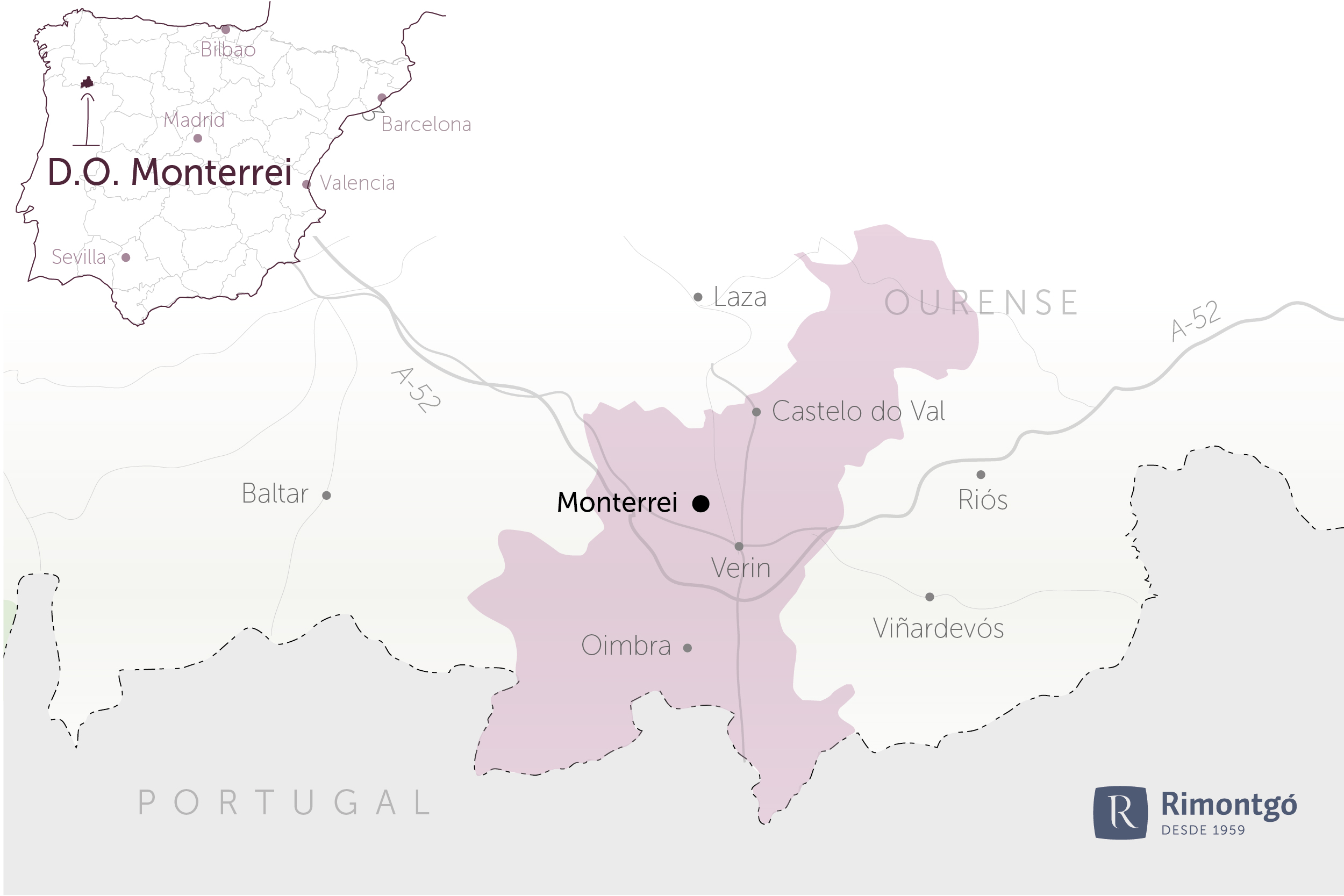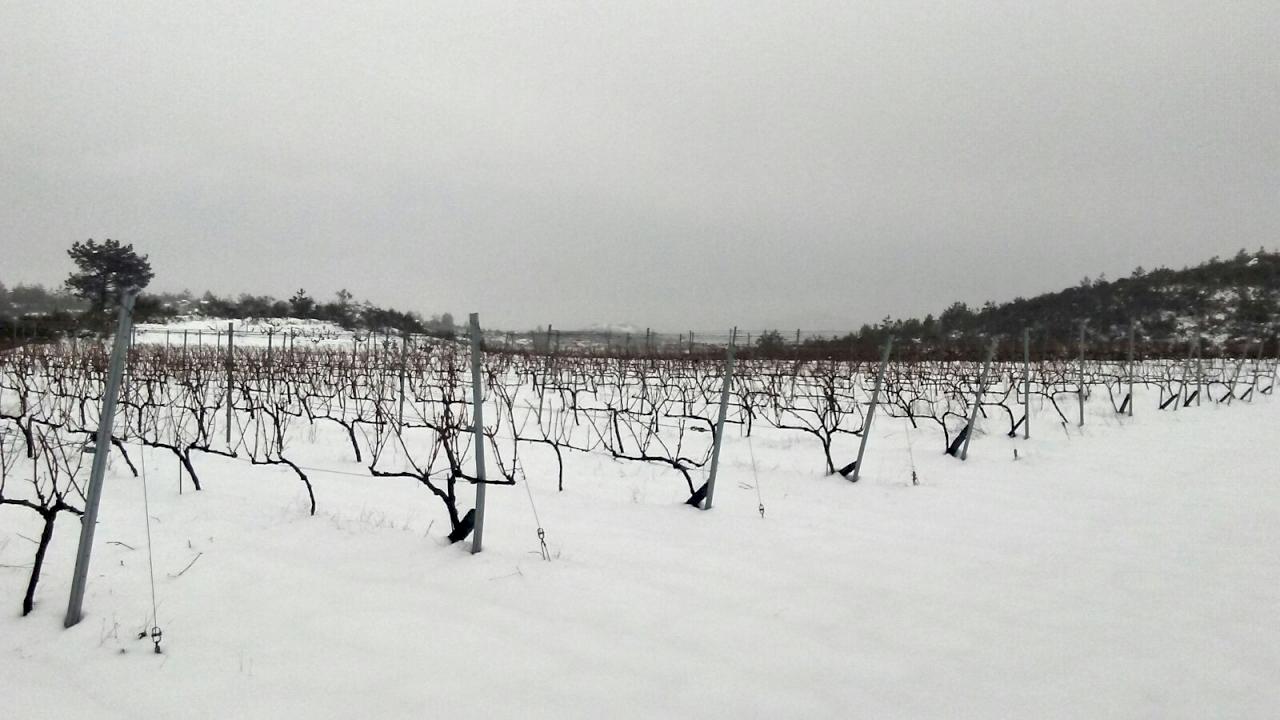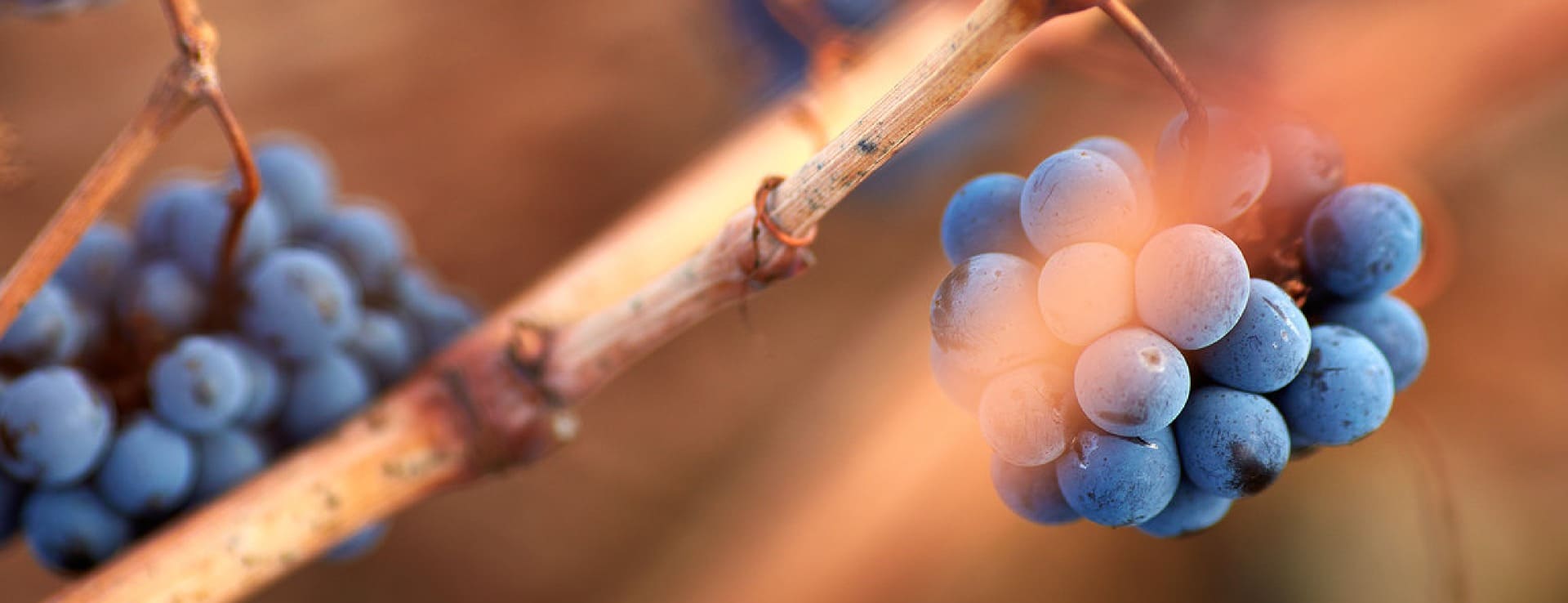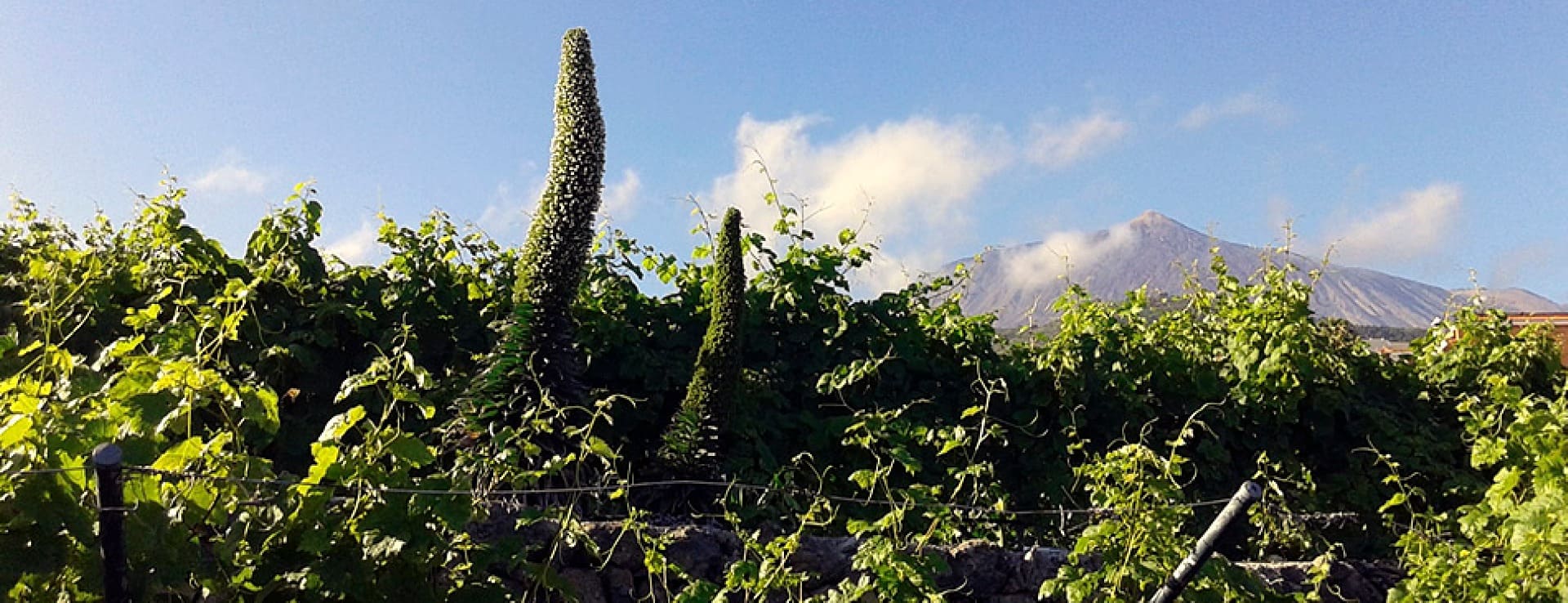Find your winery or vineyard
Infographic of the Denomination of Origin

Change to imperial units (ft2, ac, °F)Change to international units (m2, h, °C)
D.O. year of foundation:
1996
Number of wineries (2017):
25
Total surface area:
532 ha1.315 ac
Maximum production allowed:
12.000 kg/ha10.706 lb/ac
Altitude of the vineyards:
Min: 400m
Max: 500m
Min: 1.312ft
Max: 1.641ft
Temperature:
Min: -5º
Max: 37º
Min: 23°F
Max: 99°F
Yearly hours of sun:
2.200
Yearly rainfall:
700 l/m265 l/ft2
DO Monterrei
Location and History
The production area extends along the valley of the Támega River, with an area slightly over 500 hectares, distributed among the municipalities of Castrelo do Val, Monterrey, Oímbra, vilardevós and Verín.
The archaeological remains found such as presses, winepresses excavated in rock and vessels of Roman origin, evidence their participation in the introduction of viticulture in Monterrei.
Since the end of the 9th century, vine cultivation has expanded throughout the region at the hands of religious orders, as wine was used as a tribute to pay monasteries and feudal lords.
During the Middle Ages and part of the Modern Age, Monterrei exerted a great influence on economic, political and cultural aspects within Galicia and Spain. During the time of the V Count of Monterrey, Gaspar de Zúniga Acevedo y Velasco, who was granted the title of Viceroy of New Spain (Mexico) and later Viceroy of New Castilla (Peru) by King Felipe II, in order to govern the new Spanish colonies in America, Monterrei wines were marketed in overseas regions.
At the end of the 20th century, emigration and abandonment of the land, given its low profitability, almost meant the disappearance of the vineyard in the area, but the administrative recognition of the Designation of Origin and the approval of its regulations in 1994, as well as The commitment to quality wines led to the resurgence of the region.
By preserving a high percentage of preferred varieties in production (all of them native), the result is wines with specific characteristics, character and that express the typicality of the area.
Soils
Granite, slate and clay.
Altitudes vary between 400 and 450 metres. There are two subzones - Val do Monterrei, to the south of Verín, and Ladeira de Monterrei to the north of Verín, which includes the hilltop fortress itself and the area surrounding Castrelo do Val. The vineyards are planted over some 3,000 hectares in valleys of various tributaries of the River Támega, a tributary of the Douro which flows south into Portugal. The soil is mainly alluvial clay.
The red grape varieties in the Monterrei DO are Mencia and Bastard, while Araúza, Caiño Tinto, Sousón and Godello are also permitted. The white varieties are Doña Blanca, Godello, Treixadura and allowed Albariño, Branca de Monterrei, Caiño Blanco and Loureira.
Climate
This is the hottest and driest part of Galicia. It shares some of the meseta's characteristics, but keeps Galicia's higher rainfall. The Sierra de Larouca protects vines from rainy north-western winds. There are long summers, sometimes with drought. Equally, temperatures drop below freezing in winter. Rainfall averages around 683 mm - and the influence of the Atlantic produces much cooler autumns than in Castile.
Discover more wineries and vineyards for sale in these wine regions in Spain
Subscribe to our mailing list to receive news about wineries and vineyards.









